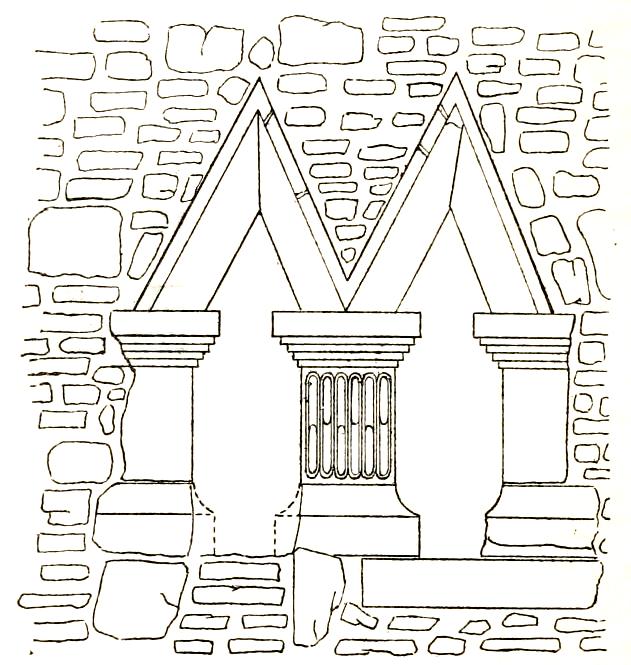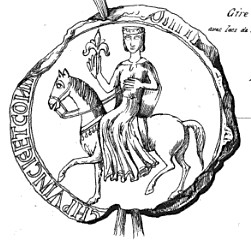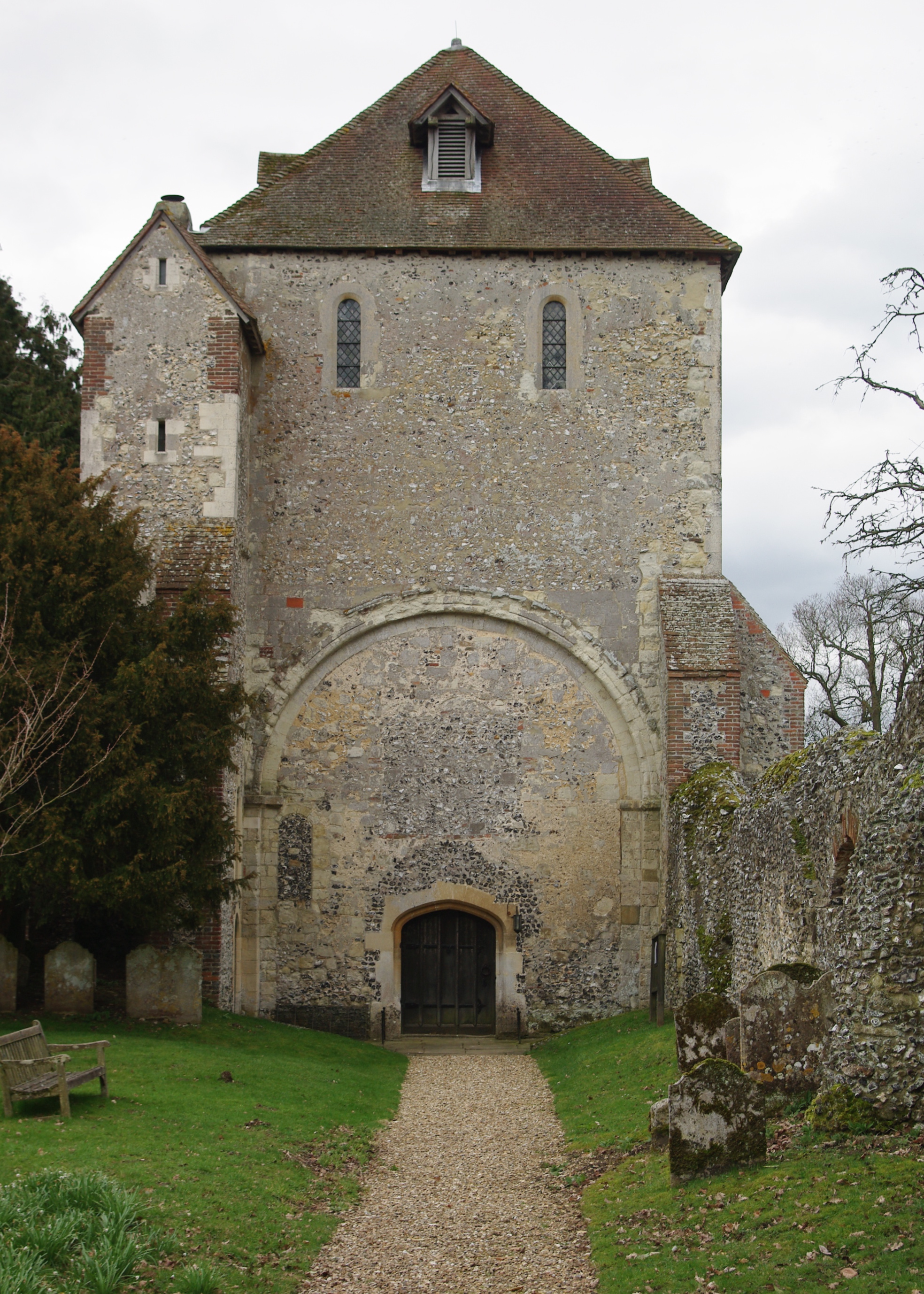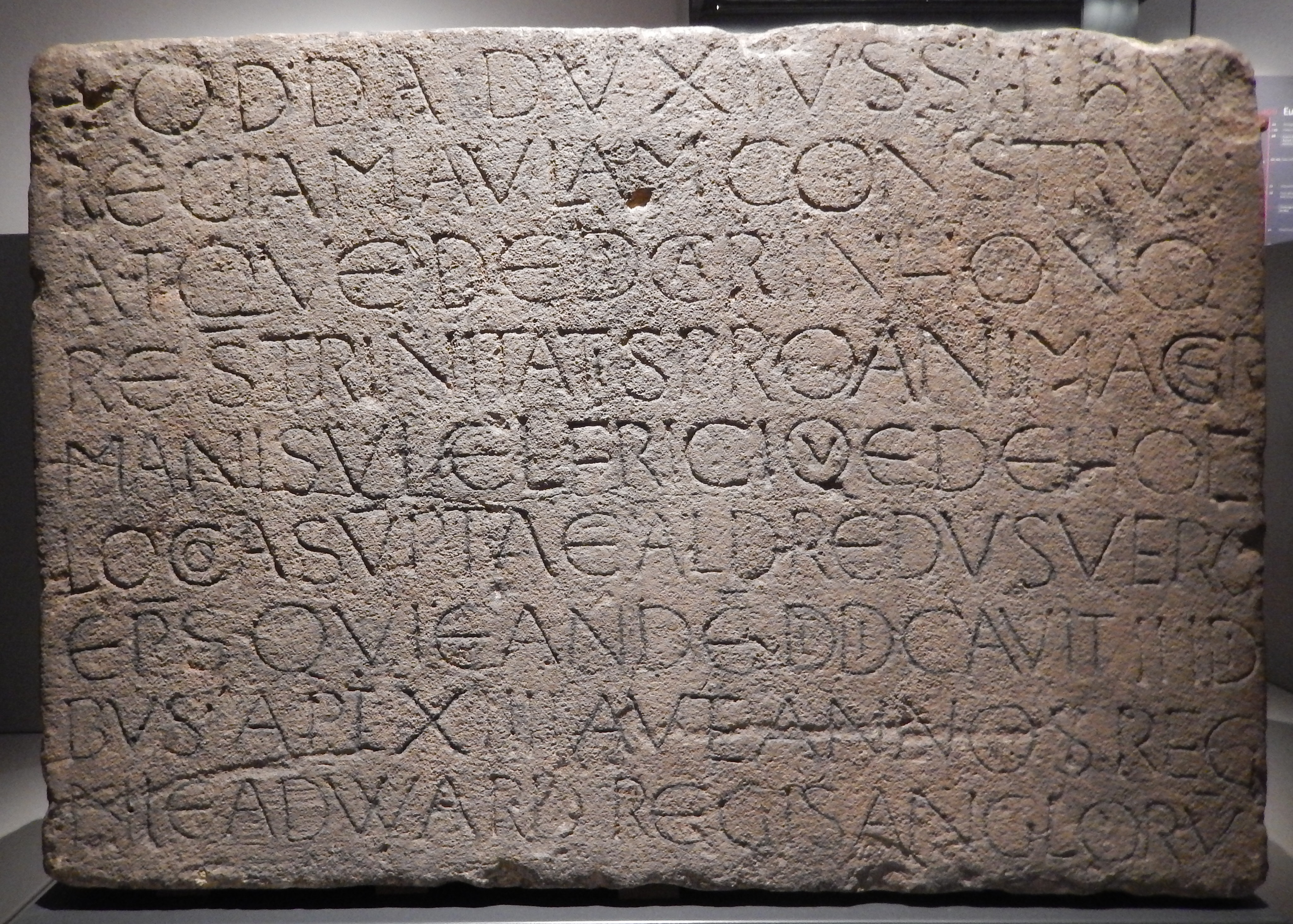|
St Mary's Priory Church, Deerhurst
St Mary's Priory Church, Deerhurst, is the Church of England parish church of Deerhurst, Gloucestershire, England. Much of the church is Anglo-Saxon architecture, Anglo-Saxon. It was built in the 8th century, when Deerhurst was part of the Anglo-Saxon kingdom of Mercia. It is contemporary with the Carolingian Renaissance on mainland Europe, which may have influenced it. The church was restored and altered in the 10th century after the Viking Age#England, Viking invasion of England. It was enlarged early in the 13th century and altered in the 14th and 15th centuries. The church has been described as "an Anglo-Saxon monument of the first order". It is a Listed building#Categories of listed building, Grade I listed building. From the History of Anglo-Saxon England, Anglo-Saxon era until the Dissolution of the Monasteries St Mary's was the church of a Order of Saint Benedict, Benedictine priory. Deerhurst has a second Anglo-Saxon place of worship, the 11th-century Odda's Chapel, abo ... [...More Info...] [...Related Items...] OR: [Wikipedia] [Google] [Baidu] |
Church Of England
The Church of England (C of E) is the State religion#State churches, established List of Christian denominations, Christian church in England and the Crown Dependencies. It is the mother church of the Anglicanism, Anglican Christian tradition, tradition, with foundational doctrines being contained in the ''Thirty-nine Articles'' and ''The Books of Homilies''. The Church traces its history to the Christian hierarchy recorded as existing in the Roman Britain, Roman province of Britain by the 3rd century and to the 6th-century Gregorian mission to Kingdom of Kent, Kent led by Augustine of Canterbury. Its members are called ''Anglicans''. In 1534, the Church of England renounced the authority of the Papacy under the direction of Henry VIII, beginning the English Reformation. The guiding theologian that shaped Anglican doctrine was the Reformer Thomas Cranmer, who developed the Church of England's liturgical text, the ''Book of Common Prayer''. Papal authority was Second Statute of ... [...More Info...] [...Related Items...] OR: [Wikipedia] [Google] [Baidu] |
History Of Anglo-Saxon England
Anglo-Saxon England or early medieval England covers the period from the end of Roman Empire, Roman imperial rule in Roman Britain, Britain in the 5th century until the Norman Conquest in 1066. Compared to modern England, the territory of the Anglo-Saxons stretched north to present day Lothian in southeastern Scotland, whereas it did not initially include western areas of England such as Cornwall, Herefordshire, Shropshire, Cheshire, Lancashire, and Cumbria. The 5th and 6th centuries involved the collapse of economic networks and political structures and also saw a radical change to a new Anglo-Saxon language and culture. This change was driven by movements of peoples as well as changes which were happening in both northern Gaul and the North Sea coast of what is now Germany and the Netherlands. The Anglo-Saxon language, also known as Old English, was a close relative of languages spoken in the latter regions, and genetic studies have confirmed that there was significant migrat ... [...More Info...] [...Related Items...] OR: [Wikipedia] [Google] [Baidu] |
Edward III Of England
Edward III (13 November 1312 – 21 June 1377), also known as Edward of Windsor before his accession, was King of England from January 1327 until his death in 1377. He is noted for his military success and for restoring royal authority after the disastrous and unorthodox reign of his father, Edward II. Edward III transformed the Kingdom of England into one of the most formidable military powers in Europe. His fifty-year reign is List of monarchs in Britain by length of reign#Ten longest-reigning British monarchs, one of the longest in English history, and saw vital developments in legislation and government, in particular the evolution of the English Parliament, as well as the ravages of the Black Death. He outlived his eldest son, Edward the Black Prince, and was succeeded by his grandson, Richard II. Edward was crowned at age fourteen after his father was deposed by his mother, Isabella of France, and her lover, Roger Mortimer, 1st Earl of March, Roger Mortimer. At the age of ... [...More Info...] [...Related Items...] OR: [Wikipedia] [Google] [Baidu] |
River Severn
The River Severn (, ), at long, is the longest river in Great Britain. It is also the river with the most voluminous flow of water by far in all of England and Wales, with an average flow rate of at Apperley, Gloucestershire. It rises in the Cambrian Mountains in mid Wales, at an altitude of , on the Plynlimon massif, which lies close to the Ceredigion/Powys border near Llanidloes. The river then flows through Shropshire, Worcestershire and Gloucestershire. The county towns of Shrewsbury, Worcester, England, Worcester and Gloucester lie on its course. The Severn's major tributaries are the River Vyrnwy, Vyrnwy, the River Tern, Tern, the River Teme, Teme, the Warwickshire Avon, and the River Stour, Worcestershire, Worcestershire Stour. By convention, the River Severn is usually considered to end, and the Severn Estuary to begin, after the Prince of Wales Bridge, between Severn Beach in South Gloucestershire and Sudbrook, Monmouthshire. The total area of the estuary's draina ... [...More Info...] [...Related Items...] OR: [Wikipedia] [Google] [Baidu] |
Abbot
Abbot is an ecclesiastical title given to the head of an independent monastery for men in various Western Christian traditions. The name is derived from ''abba'', the Aramaic form of the Hebrew ''ab'', and means "father". The female equivalent is abbess. Origins The title had its origin in the monasteries of Egypt and Syria, spread through the eastern Mediterranean, and soon became accepted generally in all languages as the designation of the head of a monastery. The word is derived from the Aramaic ' meaning "father" or ', meaning "my father" (it still has this meaning in contemporary Arabic: أب, Hebrew: אבא and Aramaic: ܐܒܐ) In the Septuagint, it was written as "abbas". At first it was employed as a respectful title for any monk, but it was soon restricted by canon law to certain priestly superiors. At times it was applied to various priests, e.g. at the court of the Frankish monarchy the ' ("of the palace"') and ' ("of the camp") were chaplains to the Merovingian ... [...More Info...] [...Related Items...] OR: [Wikipedia] [Google] [Baidu] |
Richard, 1st Earl Of Cornwall
Richard (5 January 1209 – 2 April 1272) was an English prince who was King of the Romans from 1257 until his death in 1272. He was the second son of John, King of England, and Isabella, Countess of Angoulême. Richard was nominal Count of Poitou from 1225 to 1243, and he also held the title Earl of Cornwall from 1225. He was one of the wealthiest men in Europe and joined the Barons' Crusade, where he achieved success as a negotiator for the release of prisoners and assisted with the building of the citadel in Ascalon. Biography Early life He was born 5 January 1209 at Winchester Castle, the second son of John, King of England, and Isabella, Countess of Angoulême. He was made High Sheriff of Berkshire at age eight, was styled Count of Poitou from 1225 and in the same year, at the age of sixteen, his brother King Henry III gave him Cornwall as a birthday present, making him High Sheriff of Cornwall. Richard's revenues from Cornwall helped make him one of the wealthiest me ... [...More Info...] [...Related Items...] OR: [Wikipedia] [Google] [Baidu] |
Matthew Paris
Matthew Paris, also known as Matthew of Paris (; 1200 – 1259), was an English people, English Benedictine monk, English historians in the Middle Ages, chronicler, artist in illuminated manuscripts, and cartographer who was based at St Albans Cathedral, St Albans Abbey in Hertfordshire. He authored a number of historical works, many of which he scribed and illuminated himself, typically in drawings partly coloured with watercolour washes, sometimes called "tinted drawings". Some were written in Latin, others in Anglo-Norman language, Anglo-Norman or Old French, French verse. He is sometimes confused with the nonexistent Matthew of Westminster. His is a renowned Medieval work, in many cases being a key source for mid-13th century Europe, partially due to his verbose insertion of personal opinions into his narrative and his use of sources such as records, letters, and conversations with witnesses to events including the English king Henry III of England, Henry III, earl Ri ... [...More Info...] [...Related Items...] OR: [Wikipedia] [Google] [Baidu] |
Donation Par Guillaume Le Conquérant 1 - Archives Nationales - AE-III-61
A donation is a gift for charity, humanitarian aid, or to benefit a cause. A donation may take various forms, including money, alms, services, or goods such as clothing, toys, food, or vehicles. A donation may satisfy medical needs such as blood or organs for transplant. Charitable donations of goods or services are also called ''gifts in kind''. Donating statistics In the United States, in 2007, the Bureau of Labor Statistics found that American households in the lowest fifth in terms of wealth, gave on average a higher percentage of their incomes to charitable organizations than those households in the highest fifth. Charity Navigator writes that, according to Giving USA, Americans gave $298 billion in 2011 (about 2% of GDP). The majority of donations were from individuals (73%), then from bequests (about 12%), foundations (2%) and less than 1% from corporations. The largest sector to receive donations was religious organizations (32%), then education (13%). Giving has i ... [...More Info...] [...Related Items...] OR: [Wikipedia] [Google] [Baidu] |
Alien Priory
Alien priories were religious establishments in England, such as monasteries and convents, which were under the control of another religious house outside England. Usually the Motherhouse, mother-house was in France.Coredon ''Dictionary of Medieval Terms'' p. 10 History Alien priories were small dependencies of foreign religious houses. Specifically, this pertained to the English possessions of French religious houses. The precedent went back at least as far as 912. Ælfthryth, Countess of Flanders, Ælfthryth, daughter of Alfred the Great married Baldwin II, Count of Flanders. She received various properties under her father's will, and gave Lewisham Priory with its dependencies, Greenwich and Woolwich, to the abbey of St Peter at Ghent. Edward the Confessor gave St Mary's Priory Church, Deerhurst, the parish church at Deerhurst, and its lands to the monastery of Basilica of St Denis, St Denis. The practice increased after the Norman Conquest. A number of Norman lords had found ... [...More Info...] [...Related Items...] OR: [Wikipedia] [Google] [Baidu] |
Basilica Of St Denis
The Basilica of Saint-Denis (, now formally known as the ) is a large former medieval abbey church and present cathedral in the commune of Saint-Denis, a northern suburb of Paris. The building is of singular importance historically and architecturally as its choir, completed in 1144, is widely considered the first structure to employ all of the elements of Gothic architecture. The basilica became a place of pilgrimage and a necropolis containing the tombs of the kings of France, including nearly every king from the 10th century to Louis XVIII in the 19th century. Henry IV of France came to Saint-Denis formally to renounce his Protestant faith and become a Catholic. The queens of France were crowned at Saint-Denis, and the regalia, including the sword used for crowning the kings and the royal sceptre, were kept at Saint-Denis between coronations. The site originated as a Gallo-Roman cemetery in late Roman times. The archaeological remains still lie beneath the cathedral; the g ... [...More Info...] [...Related Items...] OR: [Wikipedia] [Google] [Baidu] |
Edward The Confessor
Edward the Confessor ( 1003 – 5 January 1066) was King of England from 1042 until his death in 1066. He was the last reigning monarch of the House of Wessex. Edward was the son of Æthelred the Unready and Emma of Normandy. He succeeded Cnut the Great's son – and his own half-brother – Harthacnut. He restored the rule of the House of Wessex after the period of Danish rule since Cnut conquered England in 1016. When Edward died in 1066, he was succeeded by his wife's brother Harold Godwinson, who was defeated and killed in the same year at the Battle of Hastings by the Normans under William the Conqueror. Edward's young great-nephew Edgar Ætheling of the House of Wessex was proclaimed king after the Battle of Hastings, but was never crowned and was peacefully deposed after about eight weeks. Historians disagree about Edward's fairly long 24-year reign. His nickname reflects the traditional image of him as unworldly and pious. Confessor of the Faith, Confess ... [...More Info...] [...Related Items...] OR: [Wikipedia] [Google] [Baidu] |
Odda's Chapel
Odda's Chapel is a former chantry chapel at Deerhurst, Gloucestershire. It is an 11th-century late Anglo-Saxon architecture, Anglo-Saxon building, completed a decade before the Norman Conquest of England. In the 16th century the chapel ceased to be used for worship and by the 17th century it was part of a farmhouse. It was rediscovered and restored late in the 19th century, and further restored in the 20th century. It is now managed by English Heritage. The chapel is the smaller of two Anglo-Saxon places of worship in Deerhurst. The larger and older is St Mary's Priory Church, Deerhurst, St Mary's Priory Church. Both buildings were part of a Order of Saint Benedict, Benedictine priory, whose site is now a scheduled monument. Architecture The building has a nave and chancel, linked by a Romanesque architecture, Romanesque chancel arch. A smaller Romanesque arch forms a doorway on the north side of the chapel. The nave has small windows high in the north and south walls. History ... [...More Info...] [...Related Items...] OR: [Wikipedia] [Google] [Baidu] |










